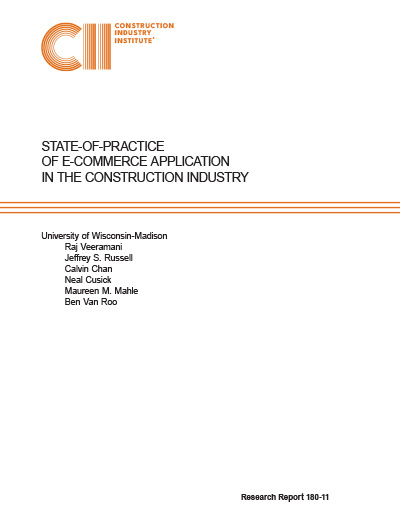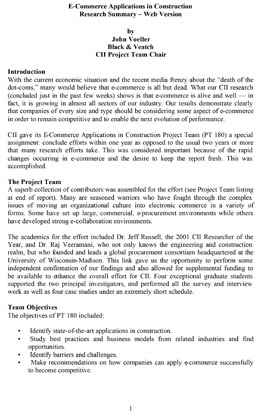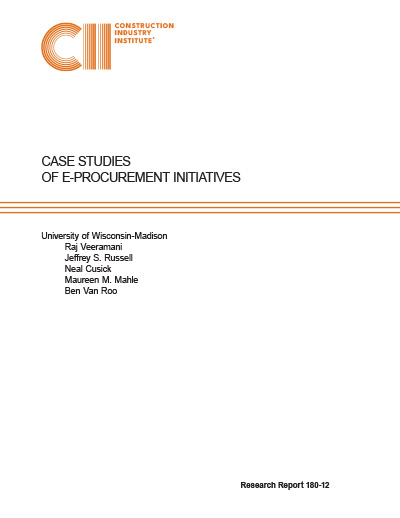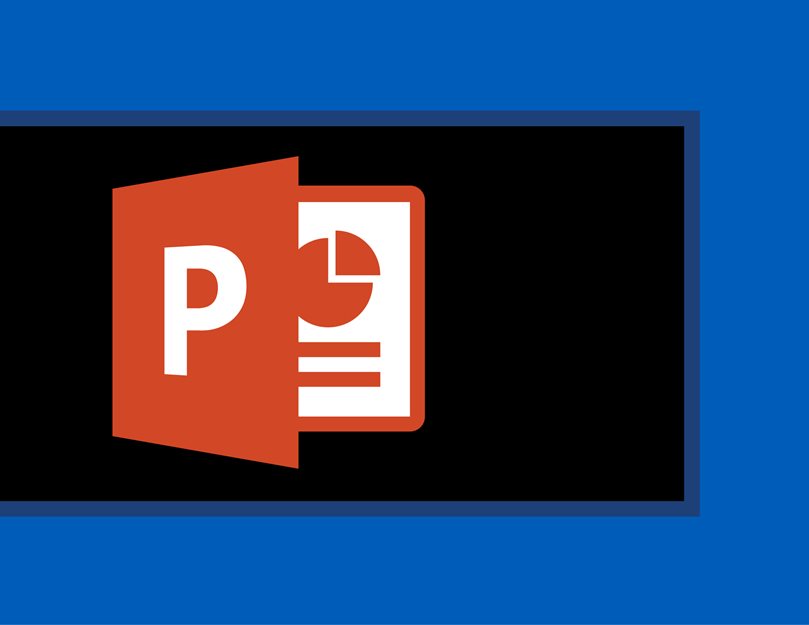
State-of-Practice of E-Commerce Application in the Construction Industry
The construction industry is increasingly aware of Internet-enabled applications and is adopting many such applications. Some companies have invested considerable time and resources in the development and implementation of e-commerce initiatives. The challenges to success of these e-commerce initiatives are numerous, however, and quantifiable success has varied among companies. This report offers an overview of e-commerce activities among Construction Industry Institute (CII) members so that readers may use these trends and lessons learned to further their understanding and utilization of e-commerce within their organizations.
This report is based on research performed by a team consisting of faculty and students from the University of Wisconsin–Madison and representatives from several CII member organizations. That team, CII Project Team 180, E-Commerce Applications in Construction, or PT 180, had the following objectives:
- Identify the state-of-practice (and possible future trends) of e-commerce in construction.
- Study e-commerce models for procurement and collaboration in other industries (particularly the manufacturing industry) to identify how these might be applied to the construction industry.
- Identify barriers and potential challenges to e-commerce application in the construction industry.
- Make recommendations on how companies in the construction industry can successfully apply e-commerce to become more competitive.
The survey provides a general overview of trends in e-business. Even though the survey sample size is small, insights gained from the survey results combined with the collective wisdom of PT 180 provides good information on the e-commerce evolution in the construction industry.
Based on the survey results, PT 180 focused on e-procurement for the remainder of the research. This stage of the project consisted of 19 in-depth interviews with CII member organization personnel about their experiences with e-procurement. Among the topics covered were strategy, technology, e-commerce metrics, costs, challenges, lessons learned, and successes. The interviews were also used to identify candidates for the case studies. Chapter 4 presents the findings from these interviews, including the following:
- Owners are leading the implementation of e-procurement.
- To date, the greatest success with e-procurement has generally been found with Indirect/Maintenance-Repair-Operations (MRO) materials in the form of:
- Cost savings
- Relative ease of implementation
- Time savings and efficiency.
- Contrary to common belief, it has been found that e-procurement methods (e.g., reverse auctions) can be successful in procurement of not just commodity items, but also engineered equipment when used judiciously and with adequate pre-planning.
- Companies have experienced significant integration challenges, both internally and externally. Lack of standardized work processes and software platforms were some of the most commonly cited challenges. Cultural barriers within an organization as well as the construction industry were also a difficult challenge faced by most organizations.
Chapter 5 discusses lessons learned in manufacturing, which has gained more experience than construction in the use of Internet-based tools for procurement and collaboration. While the two industries have distinct differences, construction has significant opportunities to gain valuable insight into e-commerce applications.
Some CII member organizations have taken aggressive steps to adopt e-commerce and have learned key lessons about the capabilities and limitations of these technologies. Others have seen their counterparts struggle and have waited to see what shows the most value for owners, contractors, designers, and suppliers. This report offers an overview of the state-of-practice of e-commerce in the construction industry as well as insight into which e-procurement initiatives have and have not worked for particular members of the industry.
Based on the findings throughout the project, PT 180 offers the following recommendations for companies to consider for implementing an e-commerce initiative:
- Become informed about the technology and the circumstances necessary for its success.
- Lay the groundwork with documented work processes and standardized systems across as much of the enterprise as possible.
- Establish metrics for the system before implementation; the power of the information technologies lies in collecting and leveraging useful data.
- Try something out—waiting for all of the pieces to fall into place means missing out on the opportunity to gain competitive advantage, so pick a small piece of the system and do a pilot in that one area.
- Remember that while automation removes the personal contact from daily operations, e-commerce does not diminish the importance of maintaining relationships with business partners.
- Close the loop by using the metrics gathered to evaluate the system and make changes accordingly.
Chapter 6 expands on these conclusions and recommendations and summarizes the various stages of research. It is the hope of PT 180 that readers will find value in the background information on e-commerce, the overview of e-commerce initiatives in the construction industry, the e-procurement experiences from fellow industry members, and lessons learned from the manufacturing industry. By applying the lessons learned and recommendations included in this report, decision makers can prepare for the changing business models and new modes of competition that accompany the spread of e-commerce throughout the construction industry.
Standardization is an extremely important area that will require review and modification accordingly. This area has two primary aspects for review: business processes and information technology systems integration.
- Business processes will need to be reviewed in relation to the procurement aspects that are subject to automation and therefore subject to a change in work process.
- Information technology systems will need to be reviewed to ensure they are (or can be) integrated to meet the needs of the changing business processes. Many large ERP solutions may lack the ability to accept a new interface or in the instance where they do accept the interface it may be found that future updates are severely hampered.
Expecting the e-Commerce tool to “magically” resolve inadequate or unmodified work processes or IT tools will not yield the desired benefit. (RR180-11, p. 67)
This is a rapidly changing area and the construction industry as a whole lags the manufacturing industry, which has had success with e-Commerce platforms, by 10-20 years. As technology changes and the adoption rate increases more updates will be necessary. There were no best practices available at the time of this research since e-Commerce was too immature to have any actions or processes as a “best practice.” (RR180-11, p. 99)
e-Commerce cannot to be dismissed as a fad.
Describes how four companies in the construction industry have implemented e-procurement initiatives. Case studies examine topics that include: (RR180-12)
- Deployment strategy and metrics
- e-Procurement of catalog-type items
- Reverse auctions
- Private third-party exchanges
A robust scorecard of performance measures is essential for monitoring key drivers of e-procurement adoption, and ultimately at improving e-procurement adoption. A scorecard captures actual results and key performance metrics related to the progress and success of a particular program. Scorecards are frequently used to assess the status of the project over time and across comparative categories of performance. (RR180-11, p. 90)



